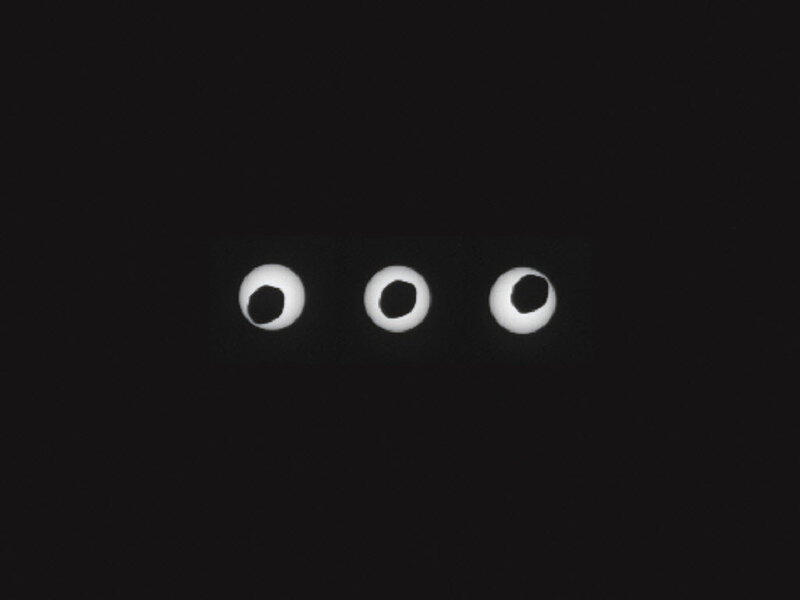Mars rover portraits solar eclipse
Loading...
NASA's Mars rover Curiosity turned its cameras skyward to snap pictures of the planet's moon, Phobos, passing in front of the sun, images released on Thursday show.
Curiosity landed on Mars in August 2012 for a two-year mission to determine if the planet most like Earth in the solar system has, or ever had, the chemical ingredients for life. It struck pay dirt in its first analysis of powder drilled out from inside a once water-soaked piece of bedrock.
The rover is now en route to its primary hunting ground, a three-mile (5-km) high mountain of layered sediment called Mount Sharp. It paused on Aug. 17 to snap pictures of Mars' larger moon, Phobos, making a dash in front of the sun. NASA released three pictures, taken three seconds apart, of the eclipse, taken with the rover's telephoto lens.
"This one is by far the most detailed image of any Martian lunar transit ever taken. It was even closer to the sun's center than predicted, so we learned something," Curiosity scientist Mark Lemmon of Texas A&M University said in a statement.
Curiosity is scheduled to moonlight as an astronomer again in September and October when it tries to catch a glimpse of the approaching Comet ISON.







